The bow of Stuttgarter Rizen is unpretentious in leaving and gives rich crops, that is why it is so loved by the gardeners of our country. On the cultivation of this culture, the peculiarities of her sowing and storage we will tell in this article.
Onion Stuttgarter Rizen: Plant Description
The main feature of this grade of Luka is its good yield, thanks to which you can get about 5 kg of product with 1 m² of sowing area. And this is if the minimum rules for the care of the plant are observed. Stuttgarter rizen is grown by two main ways: seeds with seeds or onion. In the first case, the time from planting the material before harvesting will be about 120 days, while onion of the north will allow to collect mature heads for 60-70 days.
In appearance, the bulb of this variety is a rounded fruit, a little flattened from above and below. The standard weight of the head is about 150 g, although there are fewer copies and more. If you manage to care for the culture, then you can collect bulbs weighing up to 250 g. The stuttgarter rizen is a wide variety of shades: dairy-white, light yellow, orange or chocolate.
Luca Stuttgarter Rizen grade is not affected by most diseases and pests that affect other varieties of this culture. The taste of fruits is pleasant and not too acute, so they are often used in raw form by adding to salads and other dishes. Like most other varieties, onions Stuttgarter Rizen rich in vitamin C, which makes it an effective means of combating colds.
Ludu landing Stuttgarter risen seeds
In the open soil, it is customary to planting onions-Sevkov, but to get it, it is necessary to initially grow bulwing from seeds. Consider the features of this process:
- When landing, it is important to pay attention to the quality and freshness of the sowing material. The fresh grain, the higher the likelihood of their good germination. Buying seeds, pay attention to their shelf life - if it ends in the same year, it is better to abandon the acquisition of such a product. At best, you will germinate 1/3 of all seeds in the package.
- So that the sprouts proceed faster, the seeds before landing into the ground is made to soak in the water for about a day.
- It is also necessary to prepare the soil on the garden. It should be light, nutritious. It is best for such purposes a subtle black soil with a weakly acidic or neutral reaction. If there is an acidic lime or wood ash on the area.
- Seeds can be sowed on a garden in April, when warm weather will be installed and the threat of frosts. For the cultivation of Luke, the territory is well suited, on which the cabbage, tomatoes, cucumbers, potatoes or legumes grew up.
- The seeds deepen into the ground by 4 cm, making the distance between the holes of 10 cm. After planting the grain, the soil is poured, and they watered. When shoots appear, they need to be broken, so that the plants do not interfere with each other. You can feed onion fertilizers, but it can grow perfectly and without them.
The advantages of the extension of Luke seeds are as follows:
- no need to spend money on the purchase of Sevka, which is not so cheap;
- you will not have problems with storing Sevka;
- onions will not release the shooter;
- you will avoid the risk of diseases that can be entered with poor-quality planting material;
- with the help of seeds you can grow a large number of plants.
Looking Luke Stuttgarter Rizenas
Experienced gardeners will say that planting seats in the fall - the idea is not from the best, because in this case the likelihood of the inference is high. If you still decide to carry out the procedure for autumn, choose the smallest bulbs to reduce such a risk.
Soil in autumn when landing, Sevka should be cold. As a rule, the seats are planted for 2 weeks later than winter garlic. As in the case of seeds, the soil should be fertile, nutritious and not acidic. The very beginning to landing should also be prepared:
- Initially, the bulbs warm up at a temperature of 40 ° C for 8 hours. It is most convenient to do this on the battery, pre-rash around the seaws on a thick wide board with sides, distributing it over the entire surface.
- After heating, the bulbs are soaked in warm water with a temperature of from 35 to 40 ° C. To dismiss the planting material, you need to add a manganese into the water. 1 g of mangartage is dissolved in 5 liters of fluid. Prepare a solution from this calculation, the north are soaked in it for 3-6 hours. Then the water is drained, the bulbs lay down on the burlap or on the film and are covered.
Do not forget to pre-move the sevock and remove the patients from the total mass, who have fallen, dried up. With the cultivation of Luke, Stuttgarter Rizenas Svodovka deepen into the ground by 3-4 cm, leaving a distance of 10 cm between the wells.
Saving Savka under the winter is distinguished by a number of positive moments:
- with the onset of spring, the sprouts make their way through the earth faster;
- plants are actively developing, build up well as green mass and underground part;
- saved under the winter of the north does not allow the arrows;
- the crop matures much faster.
It is worth noting that the north is good forces only in the "native" climatic conditions. That is, if it is brought from southern latitudes, then in the northern climate he may not grow. The reason is the difference between the durations of the daylight. Failure to comply with the temperature regime in the process of winter storage. Sevka can lead to an increase in the shorting.
Luca Care Stuttgarter Rizen
The culture under consideration is considered quite unpretentious in care and almost does not require any particular cultivation conditions. However, it is worth considering under what circumstances the plant will feel better:
- As mentioned earlier, Zvka is worth picking neutral or weakly acidic soil.
- Onions are well tolerating cold, but still he likes warm or moderate climatic conditions.
- Obolka Luke is also considered a prerequisite for good yields. Removing weeds, you ensure your plants the possibility of obtaining nutrients from the soil, and also give more space for development.
- Earth loosening gives roots access to oxygen, which also has a beneficial effect on the cultivation of Luke.
- Watering the soil should be drying.
- It is possible to fertilize the Stuttgarter Rizen by any complex compositions that are sold in almost every specialized store.
- So that the onions grow and develop faster, a couple of weeks after landing, it can be fertilized with a cowboy or a bird litter solution.
- After another 5 weeks, the culture can be filtered again, using urea, superphosphate and potassium salt. Mix 15 g of urea and superphosphate and add 40 g of potash salt. Dissolve it all in water and enter the roots during irrigation.
- With the beginning of the formation of Lukovichki, Stuttgarter Rizen should be felt again. To do this, mix 30 g of superphosphate and 15 g of potassium salt, dissolve in a bucket of water and sprinkle plants.
- Bad development or pale leaves of Luke say that culture lacks nitrogen fertilizers. If foliage began to fade ahead of time, the plant should be filled with potassium. The blackening and drying of "feathers" testifies to phosphorus deficiency.
Onions in no case cannot be picked up fresh manure, as this may cause the development of diseases and slow down the aging of the harvest.
Diseases and pests of Luca
Stuttgarter Rizen variety, unlike many other varieties of culture, is very resistant to diseases and pests. He is almost no fear of malievable dew, sometimes such plants are prone to attractiveness and nestiness. The probability of bite infection with disease increases when using poor-quality planting material. To avoid such a risk, try to acquire the product only in proven stores. Both seeds and the bow of the navigas are taken to disinfect with a solution of manganese. On a garden with a bow, you can sow a bit of dill to scare the pests.
Collection and storage of Luke Stuttgarter Rizen
Before harvesting onions, about a month before the planned date, it is necessary to reduce the culture of culture to a minimum, and then stop at all - this will allow the heads to grow faster. Collect the bulbs begin when foliage yellow and lifted. Although the bow in the ground is not worth it, because he can again go into growth.
After harvesting, the harvest dries right on the bed in the open sky, if the weather is solar and dry. If it rains, the onions are dried under a canopy or indoors. After drying the crop sort, remove the foliage and roots.
You can store onions in the whole winter, if it is completely ridiculous and good. If any specimens are not ripe enough, it is better to use them first. The segues store in the sandboxes in the basement or in the cellar, periodically checking the containers for the presence of condensate. If moisture formed in the bulbs, it should be dried, otherwise it can germinate or contracted.

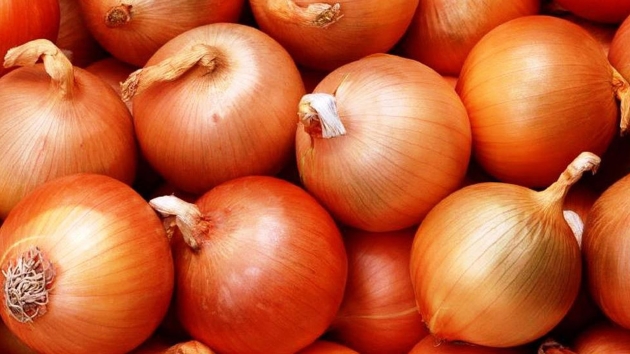
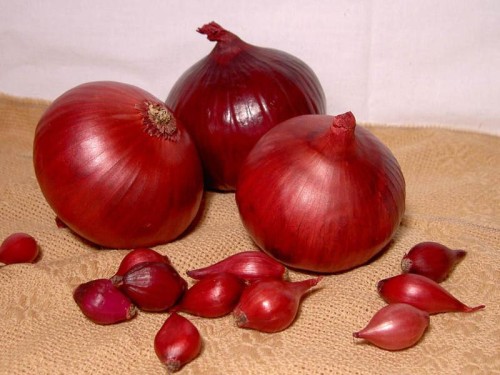
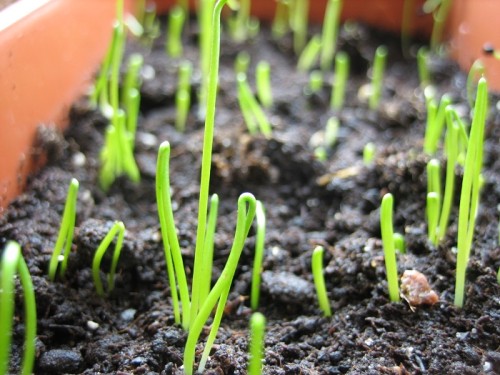
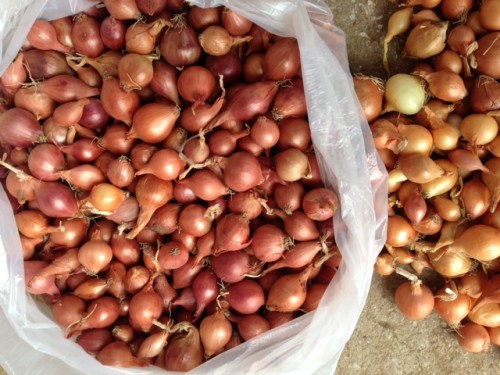
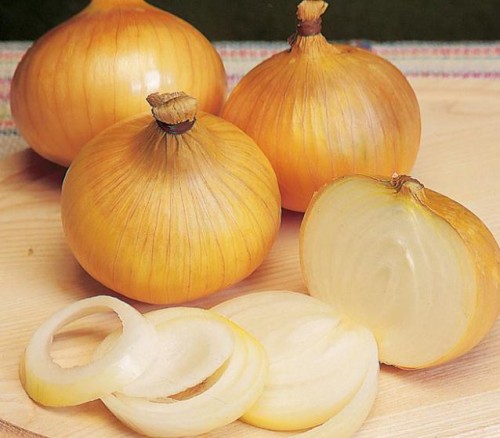
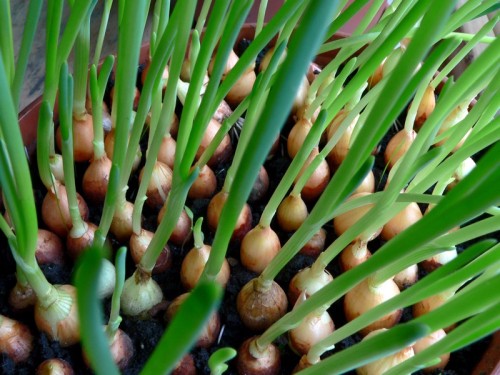
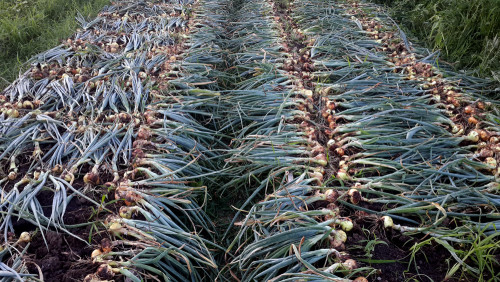












 Start a discussion ...
Start a discussion ...